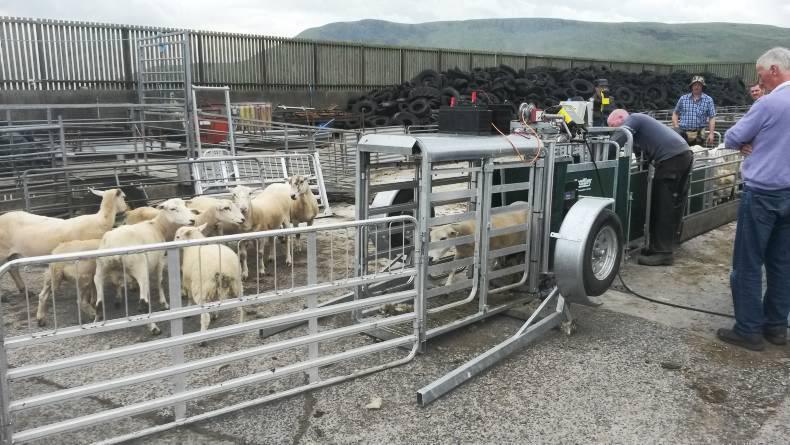Selection of sheep based on performance is top of the agenda for Campbell Tweed when it comes to development of his flock in Ballygally, Co Antrim.Members of the NI Institute of Agricultural Science (NIIAS) had their summer visit to his 1,600ac farm last week.
Selection of sheep based on performance is top of the agenda for Campbell Tweed when it comes to development of his flock in Ballygally, Co Antrim.
Members of the NI Institute of Agricultural Science (NIIAS) had their summer visit to his 1,600ac farm last week.
The farm is mostly dry hill situated at the start of the glens of Antrim, with about 300 acres capable of being cut for silage.
The 2,750 sheep on the farm are primarily Easy Care, gradually bred from a traditional Scottish blackface flock. Blackface ewes were crossed with a Wiltshire Horn ram, and then three Easy Care rams were bought in and put to the Wiltshire crosses.
Wool shedding
The Easy Care breed is derived from Wiltshire Horn and South Welsh Mountain breeds and has wool shedding genetics.
“Wool is expensive to produce, and the direct and indirect costs are significantly greater than the returns today,” claimed Campbell. He also highlighted that wool on sheep causes them to go on their back and encourages blowfly strike, requiring the use of chemicals in the form of pour-on or dip.
“There were 7,000 sheep in total here last year and only 20 required chemical treatment due to blowfly strike,” he maintained.
Shedding begins in mid-May and the short fibre wool drops off gradually and quickly disintegrates. Ewes are classified as bare, scruffy or rough, with only the rough ewes requiring some shearing in summer.
The removal of problem ewes and careful selection of replacements is used to improve the overall efficiency of the flock. No progeny from problematic ewes (for example, ewes that require assistance at lambing) are retained. This has resulted in an overall lambing difficulty rate of 0.5%, with one person, working normal daytime hours, able to look after 1,000 ewes at lambing.
Strict culling and selection means that the farm has a high replacement rate. The bottom 25% of ewes are sold on the commercial market and 1,200 hoggets were brought into the flock last year alone. The money received for these ewes at sale generally covers the cost of retaining replacement ewe lambs. No routine foot-trimming is practised on the flock.
All sheep on the farm are performance recorded for Signet and Sheep Ireland and selected for five key production traits: fertility, growth, health, survival and longevity. Lambs are weighed at birth, eight weeks, weaning and 20 weeks and a representative sample are eye muscle- and backfat-scanned.
Ewes are also closely monitored and weighed along with lambs. Campbell said: “We want a ewe to milk well when lactating and be able to put on weight again when dry.”
He argued that many breeders focus on carcase size too much and forget about overall flock productivity and farm efficiency. His aim is for a fast-growing lamb that kills at 19.5kg, grades an R grade and has a lambing percentage of 155% with minimal labour requirement. Last year’s lambing percentage was 146%.
Lambing takes place outside from 10 April and the first lambs are slaughtered by late August or early September. Lambs are sold to Sainsbury’s through Dunbia.
Soils
Soils on the farm are acidic and low in phosphorous. Campbell has applied lime to accessible areas and is continually trying to encourage clover.
Boundary fencing and subsequent sub divisions on hill ground allow a rotational grazing system to be used.
Deficiencies in the micronutrients – copper, selenium and iodine – means that ewes receive mineral boluses and lambs are injected accordingly.






SHARING OPTIONS